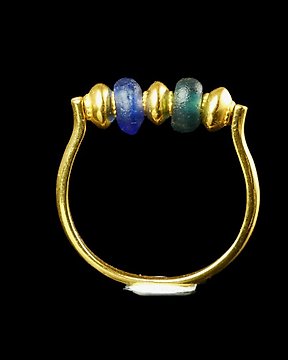
Romersk antik Ring med romerske glasperler (Ingen mindstepris)
Nr. 83079279

Nr. 83079279

Roman amphora type Dressel 30 (other types: Augst 15, Keay 1A, Ostia 5, Peacock & Williams 38).
African imitation of Gauloise type 4. This type was first noticed by Panella (1973). Like the Gallic model, this amphora has an "annular rim" (Keay, 1984), but generally has a flat outer surface. Its neck is very narrowed and has an hourglass shape. The handles are characterized by a curved semicircular profile and a smooth connection to the neck (Keay, 1984). The belly is conversely pear-shaped, strongly clamped towards the base and ending with a short, cylindrical, hollow bottom.
Dimensions: height approx. 52 cm, maximum diameter 24 cm, spout diameter approx. 12 cm.
Origin: This type is associated with a series of stamps impressed on the ear, indicating the province of Mauretania Caesariensis and the city of Tubusuctu/Tiklat (e.g. EXPROV/MAVR CAES/TVBVSCTV or Saldae/Bougie: Laporte, 1976-78).
Distribution: Wide distribution but in small quantities, found in the western Mediterranean: Morocco (Thamusida, Volubilis, Banasa), Spain (ItalicaOstia, Rome), Egypt (Alexandria), Sudan (Meroë).
Use: Contrary to past suggestions that Dressel 30 amphorae were used to transport olive oil (Laporte, 1976–78), it now appears that they were wine (Panella, 2002).
State of Preservation: amphora glued from several large fragments, but without losses or reconstructions, missing base, numerous growths of coral and other marine organisms on the surface, a fragment of the belly of another amphora "attached" to the edge of the spout, which indicates its origin from a wreck - probably from the Sea Mediterranean.
Bought from Polish Antique Dealer (original certificate of authencity included).
Sådan køber du hos Catawiki
1. Opdag noget særligt
2. Afgiv det højeste bud
3. Foretag en sikker betaling